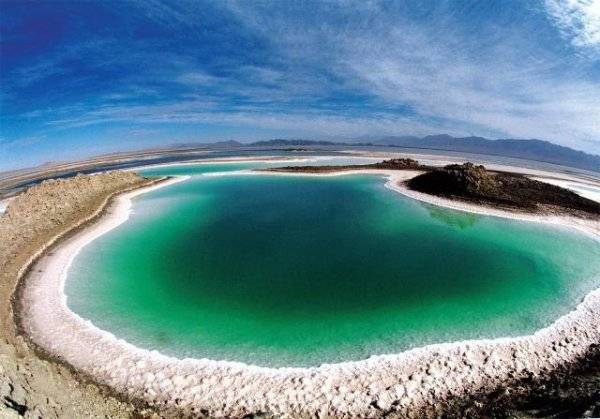Qaidam is not only a world of salt (with many salt lakes and marshes in the southeast), but also rich in oil, coal, and various metal minerals. For example, Lenghu's oil, Yuka's coal, and Xitieshan's lead-zinc mine are all well-known. Therefore, the Qaidam Basin is famously known as the 'Treasure Basin'.
Alien Ruins
Baigong Mountain, located more than 40 kilometers southwest of Delingha City, the capital of Qaidam, has a UFO mark. This is the legendary Delingha Alien Ruins, where China's first 'crop circle' appeared near the Delingha Alien Ruins in Qinghai.
Located in the heart of the Qinghai-Tibet Plateau, the Sanjiangyuan Nature Reserve is situated at the headwaters of the Yangtze, Yellow, and Lancang Rivers. This area is not only towering with numerous lakes, snow-capped mountains, and glaciers, but also boasts a very rich diversity of wildlife. It is known as the 'Water Tower of China' due to its many major rivers originating here, and as a genetic bank of species due to its numerous endemic species.
The average altitude of the Qilian Mountain range is between 4000 meters and 5000 meters. Areas above 4000 meters are referred to as the snow line. Snow lotus, silkworm thread, and snow mountain grass are known as the 'Three Friends of Winter' on the Qilian Mountain snow line.
Zhuo'er Mountain Scenic Area
Standing on the top of Zhuo'er Mountain, the view is extremely wide and unobstructed in all directions. Opposite the mountain is Niuxin Mountain, which offers a panoramic view of the four seasons. On the left and right are the Ladong Gorge and Baiyanggou Scenic Areas, respectively. Behind is the undulating Qilian Mountains, and at the foot of the mountain, the endless Babao River winds around the county like white khatas... Everywhere is a beautiful scene, like a fairyland, making people feel relaxed and happy.
Guide National Geopark
Located in Ashigong Village, Garang Township, Guide County, Hainan Tibetan Autonomous Prefecture, Qinghai Province, the scenic area is known for its long-standing and unique Danxia landforms, with numerous peculiar peaks, unique geological formations, and colorful mountains that appear in seven colors, hence also known as the Seven-colored Peak Cluster. Tourist attractions include 13 cultural theme squares and 7 Danxia canyons, among which Nuwa Canyon, Thousand Buddha Canyon, and Tongtian Canyon are rare natural wonders in the world. There are several Danxia landforms in Guide, the most famous being Ashigong Canyon.
Located on the north shore of Qinghai Lake, this area boasts a rich variety of flora and fauna and unique wetland landscapes. Many bird species particularly enjoy migrating and living here. From June to October each year, the Fairy Bay Wetland blooms with flowers of different colors in different seasons. The red and yellow flowers interweave like a natural carpet, presenting a breathtaking 'sea of flowers' before your eyes.
Animaqing Snow Mountain
Xueshan Township, located in the northwest of Maqin County, Golog Tibetan Autonomous Prefecture. This famous 'Animaqing Snow Mountain' has become one of the 'Nine Gods' in the hearts of the Tibetan people due to its magical and sacred colors, and is regarded as one of the 'Holy Lands'.



















